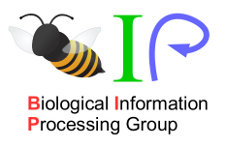
Project: Backtracking past immune challenges from memory cell patterns, using invertible neural networks.
The prediction of an immune response to an immune challenge, such as a viral infection or vaccination is a complex task, as multiple factors, such as the characteristics of the challenge and the patient’s immune systems vary from case to case.
Even more challenging is the task to trace back, which challenge occurred when in the immunological history of a patient, because the initial information of the immune challenge is compressed into the pattern of memory cells, awaiting the next occurrence of the corresponding antigen. Therefore, this task is best given to a machine learning algorithm, which can be trained with real patient data in the future.
In the current collaboration with the BioQuant lab of Frederik Graw, I advance the invertible neural network, initially created by Jonas Jürgensen for immune challenge backtracking, to apply to a more realistic immune model, including negative immune interference, which contains information of the order of challenges.
Antigens are often affine to more than one immune cell, although their receptors might be slightly different, which is called cross-reactivity. As the stimulation of immune cells and generation of memory cells depends on the level of unbound antigens, active immune cells can prevent future challenges from triggering the generation of new memory, because the antigens are intercepted by antibodies, before a memory can be built.
For this reason, two challenges with very similar antigens show a negative interference, as the second of these challenges, doesn’t generate a full memory generation and thereby imprints the information of their order into the memory cell pattern.
We currently train the network on artificial data, to predict the order of challenges, based on the effect of interference.
A better understanding of past immune challenges and immune interference could in future lead to patient tailored vaccinations, especially for fast changing viruses, such as Influenza, to improve protection against harmful courses of disease.

